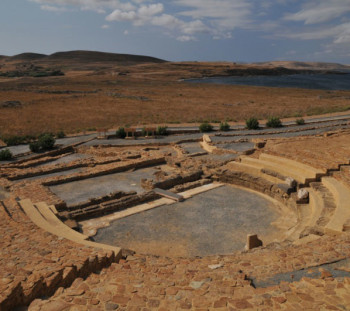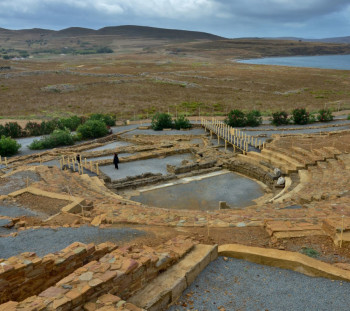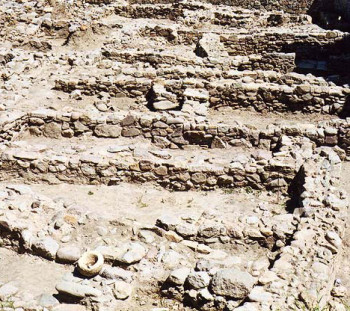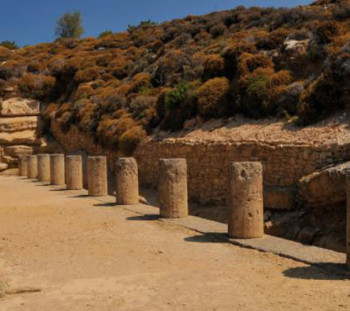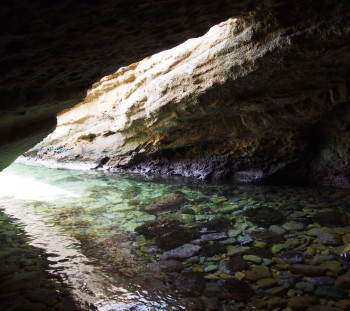Exhibition
Historical and archaeological touristic routes
For archeology lovers, the visit is proposed in the following areas:
Stop 1. Poliochni Archaeological site
Poliochni is an archaeological site on the east coast of Lemnos, near the village of Kaminia, built at the dawn of the Neolithic period. It was one of the most important settlements of the Aegean during the 3rd millennium BC. During the Bronze Era, it experienced such a development that nowadays it is considered as the oldest city in Europe with an early form of social and urban organization. In the archaeological site lies the Prehistoric Settlement Museum of Poliochni, which collects many important findings.
Stop 2. Archaeological site of Hephaestia
Hephaestia was the largest and oldest city of Lemnos who played an important role in the history of the island. The excavations by the Italian archaeologist Della Seta, unearthed a sanctuary dedicated to the Great Goddess Lemnos, necropolis, baths, a large building, wells, theater of the Hellenistic period, many houses, a shrine and a large burnt necropolis. In addition, several weapons, gold items, clay figurines and local style vessels were found.
Stop 3. Prehistoric Archaeological site of Mirina
In Mirina, in the shallow waters area and in the position where the ancient town was found, excavations have brought to light the center of a prehistoric settlement, which was organized in archaeological site accessible to visitors. The pottery workshop near the Hellenistic and Roman necropolis, the ruins of the walls, are some of the interesting relics of the Neolithic settlement located outside the walls of the castle of Myrina.
Stop 4. Sanctuary Kaveries – Cave of Philoctetes
Kaviries were ancient Greek deities of sacramental worship. The Kaveiria Mysteries were celebrated to honor them in which fertility and rebirth of nature were celebrated with animal sacrifices to the gods, libations, prayers and tributes. The most important event was the celebration of porphyria which enlivened the discovery of fire, according to tradition, on the island of Lemnos by the god Hephaestus. The metalworkers’ unions played a special role. On the coast of Kaviria there is the cave of Philoctetes, which was bitten by a snake, causing his foot to give off an unbearable smell. He was cured with the help of Lemnian Earth.


